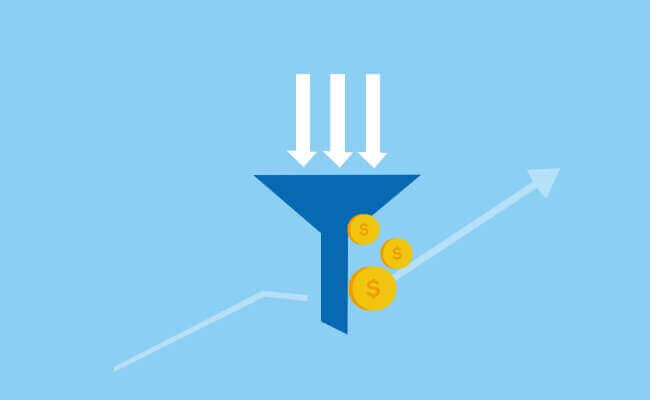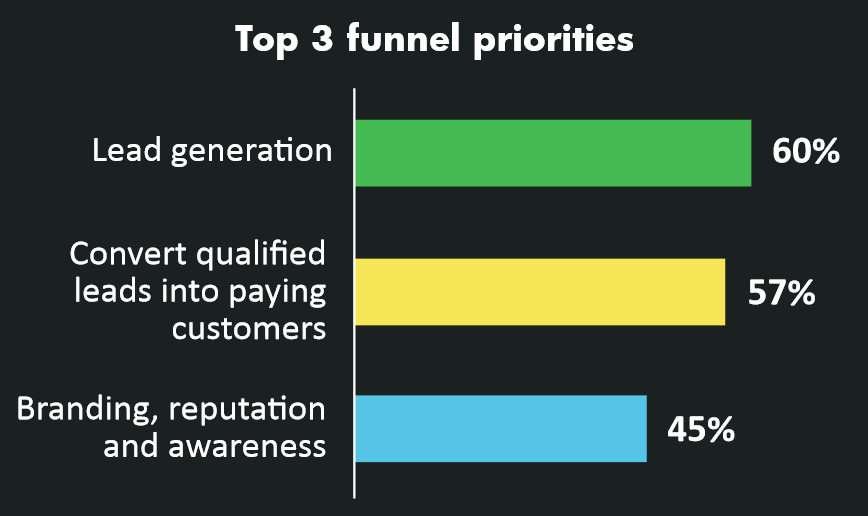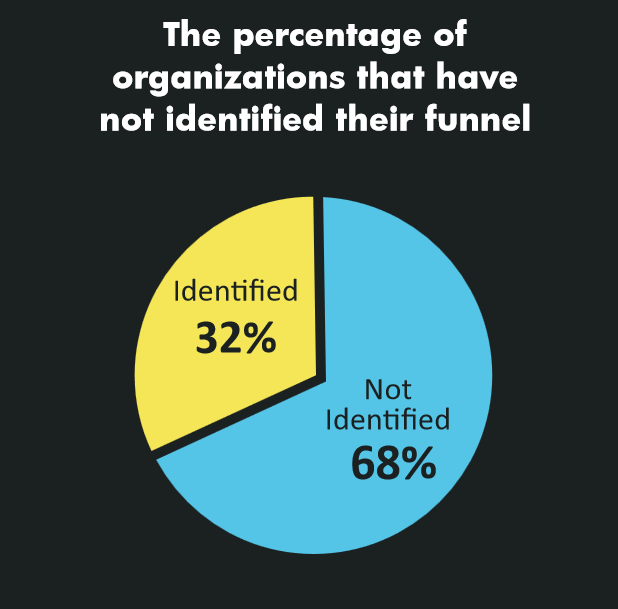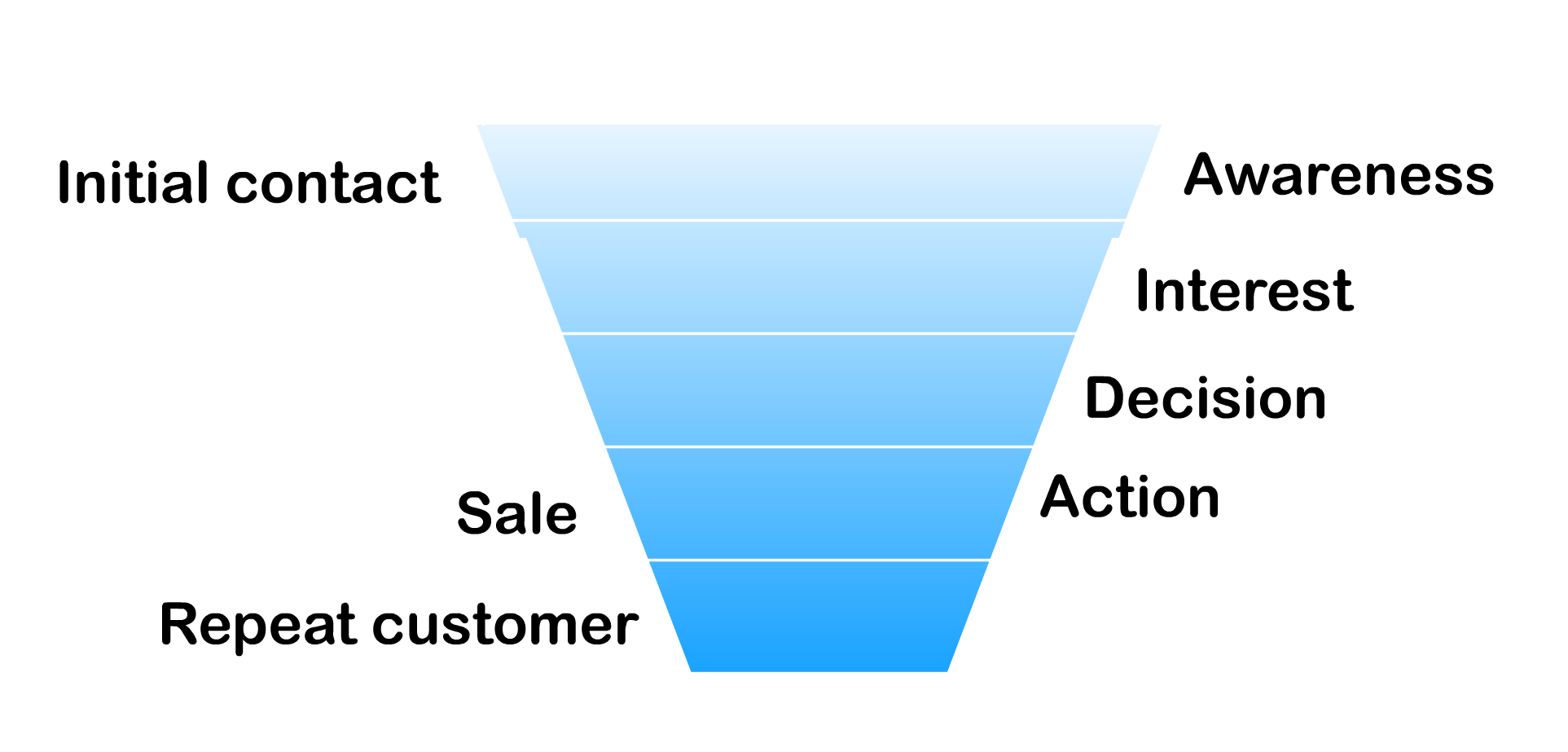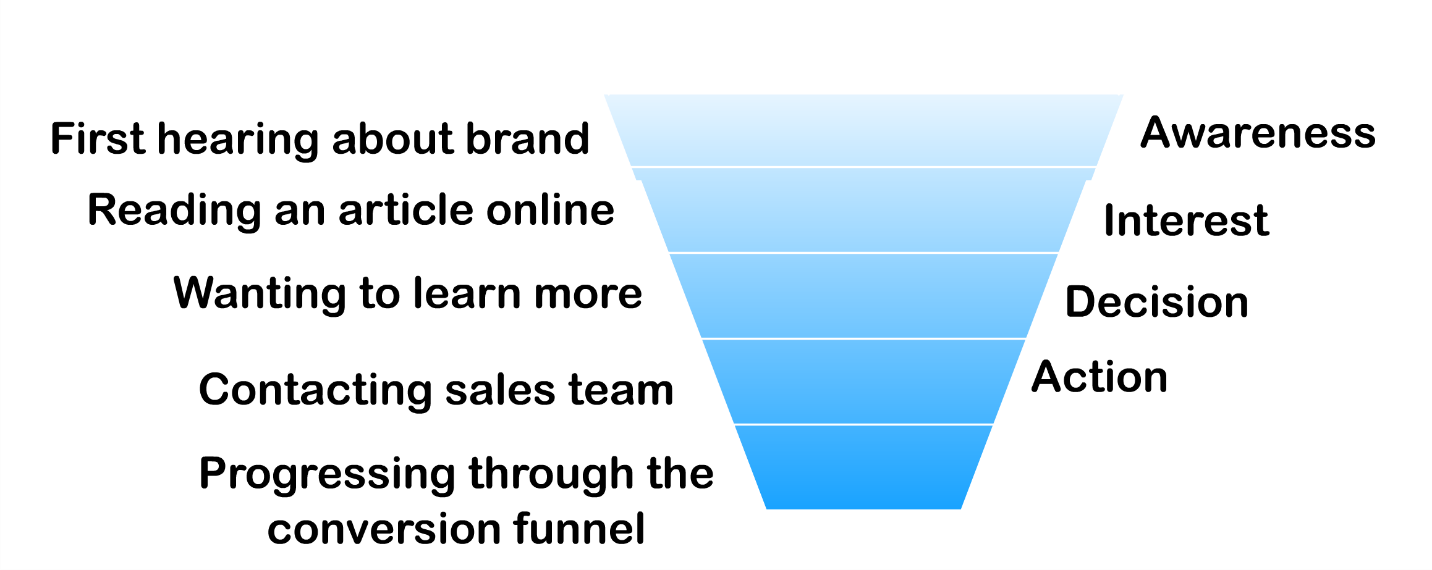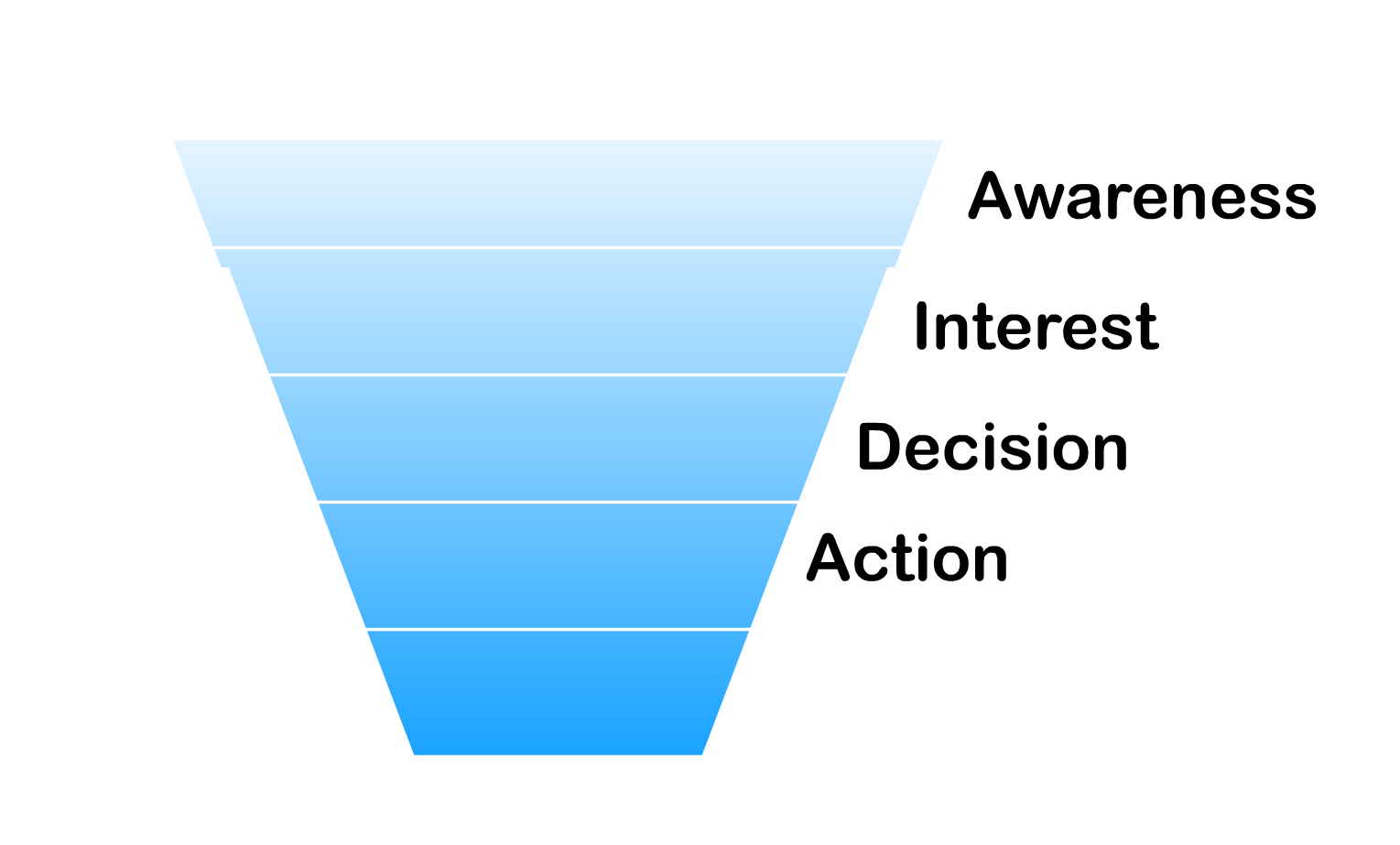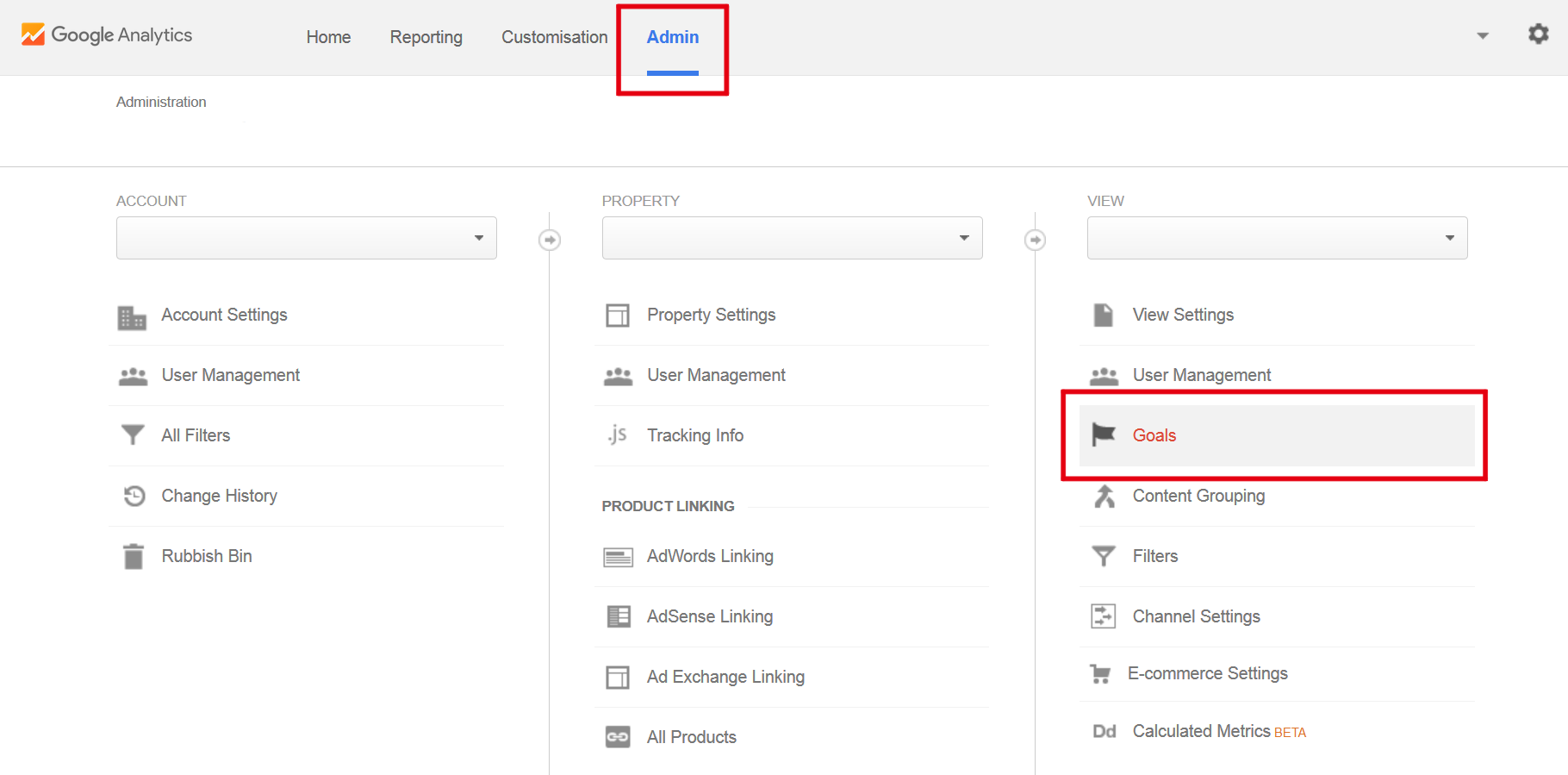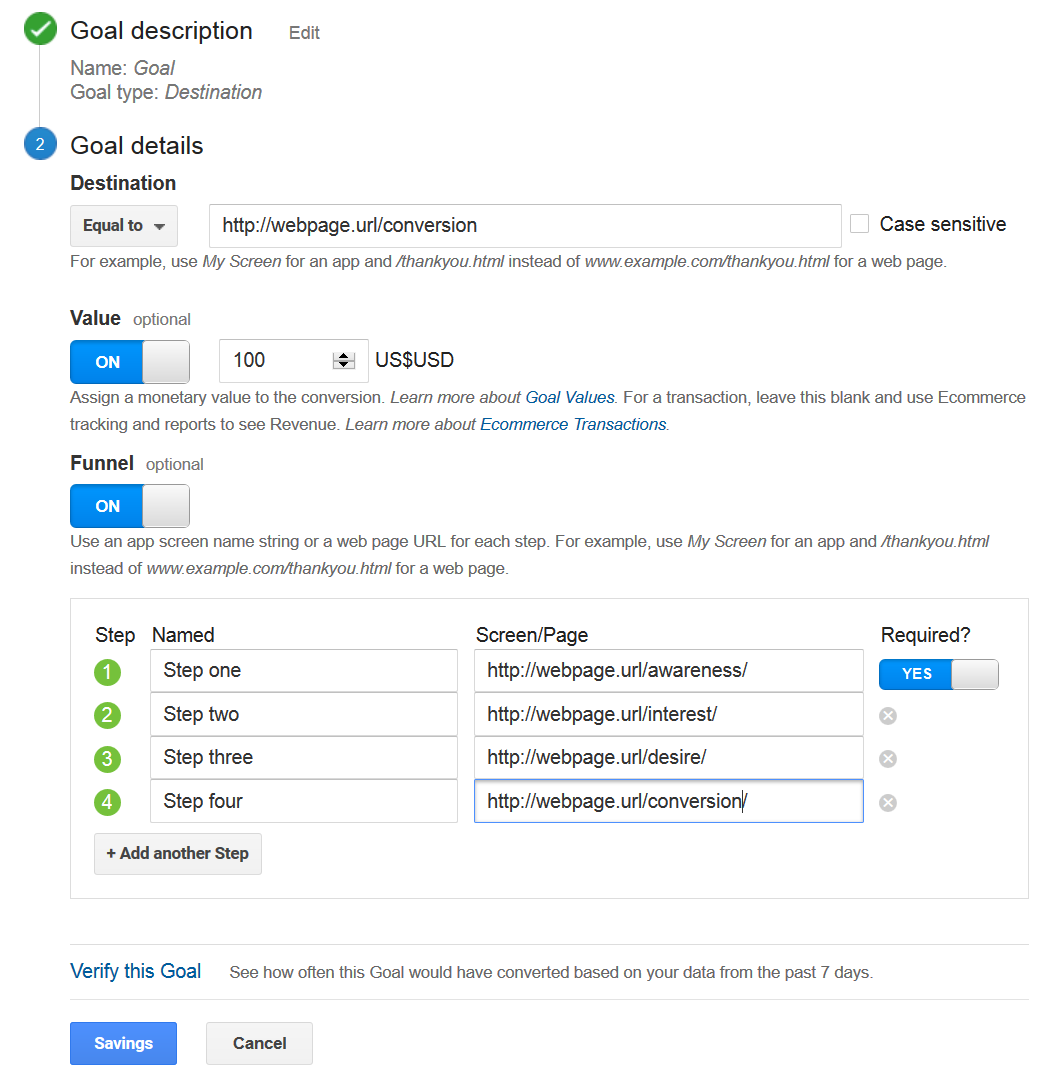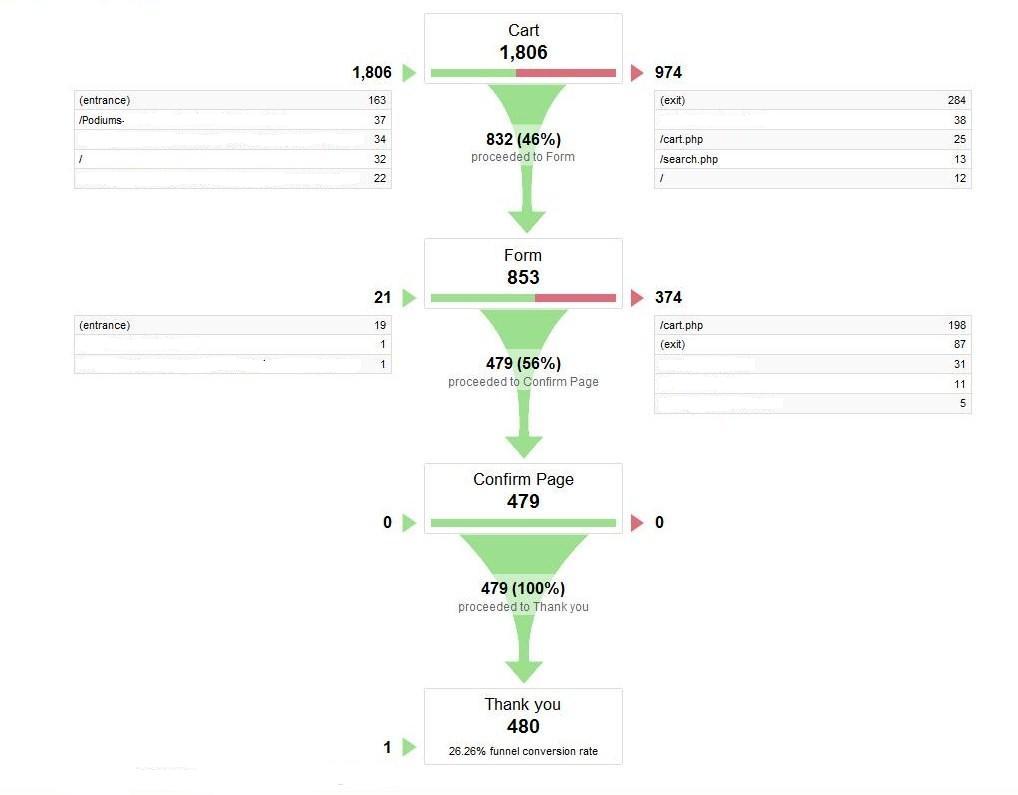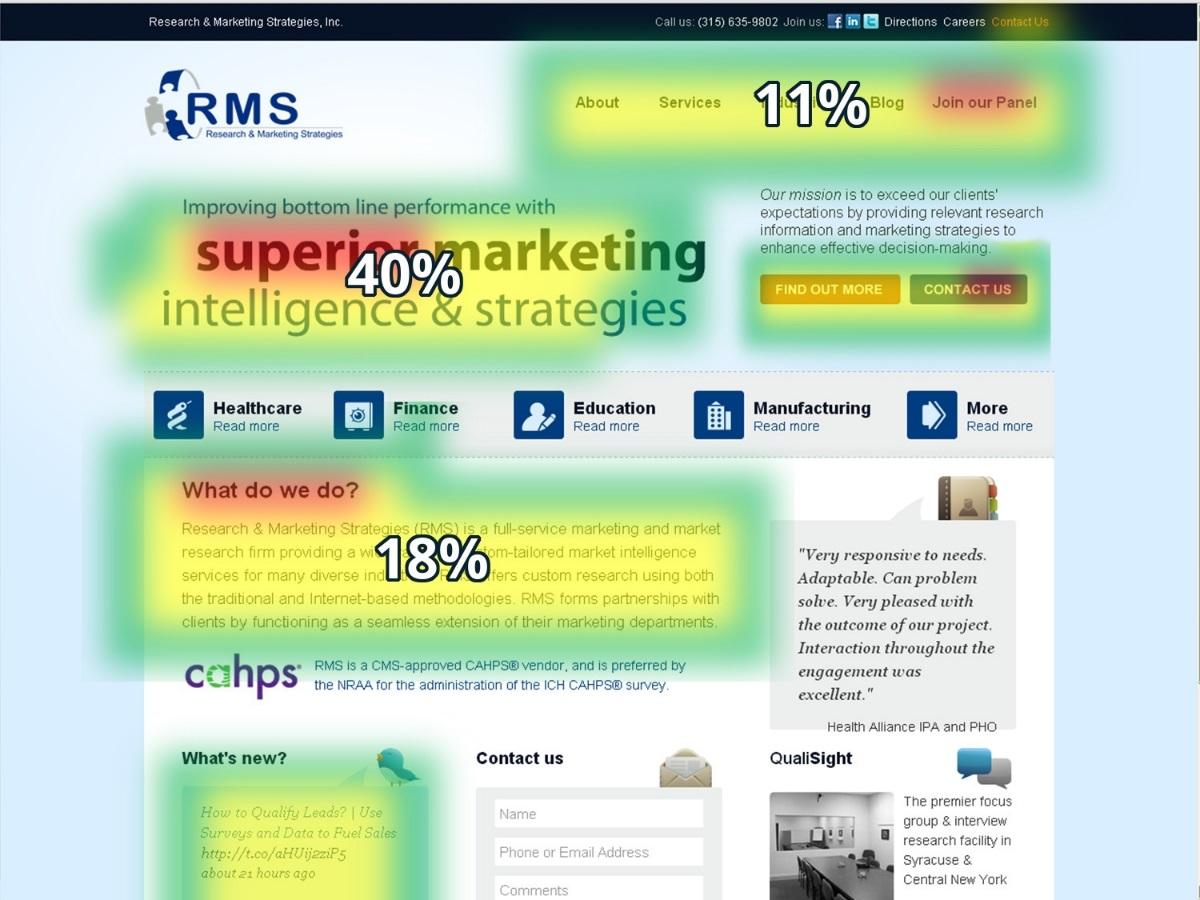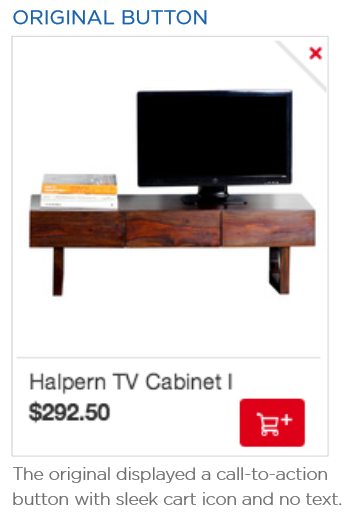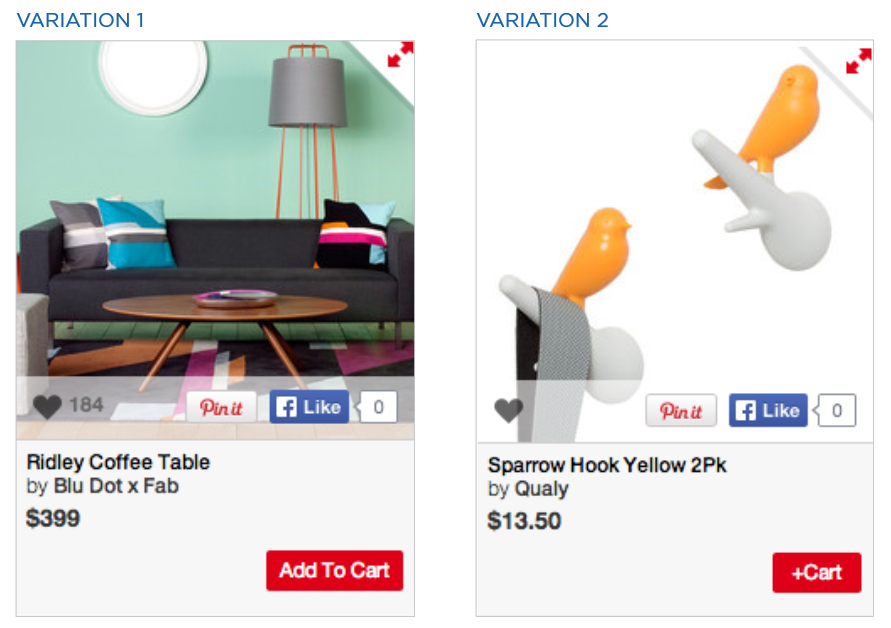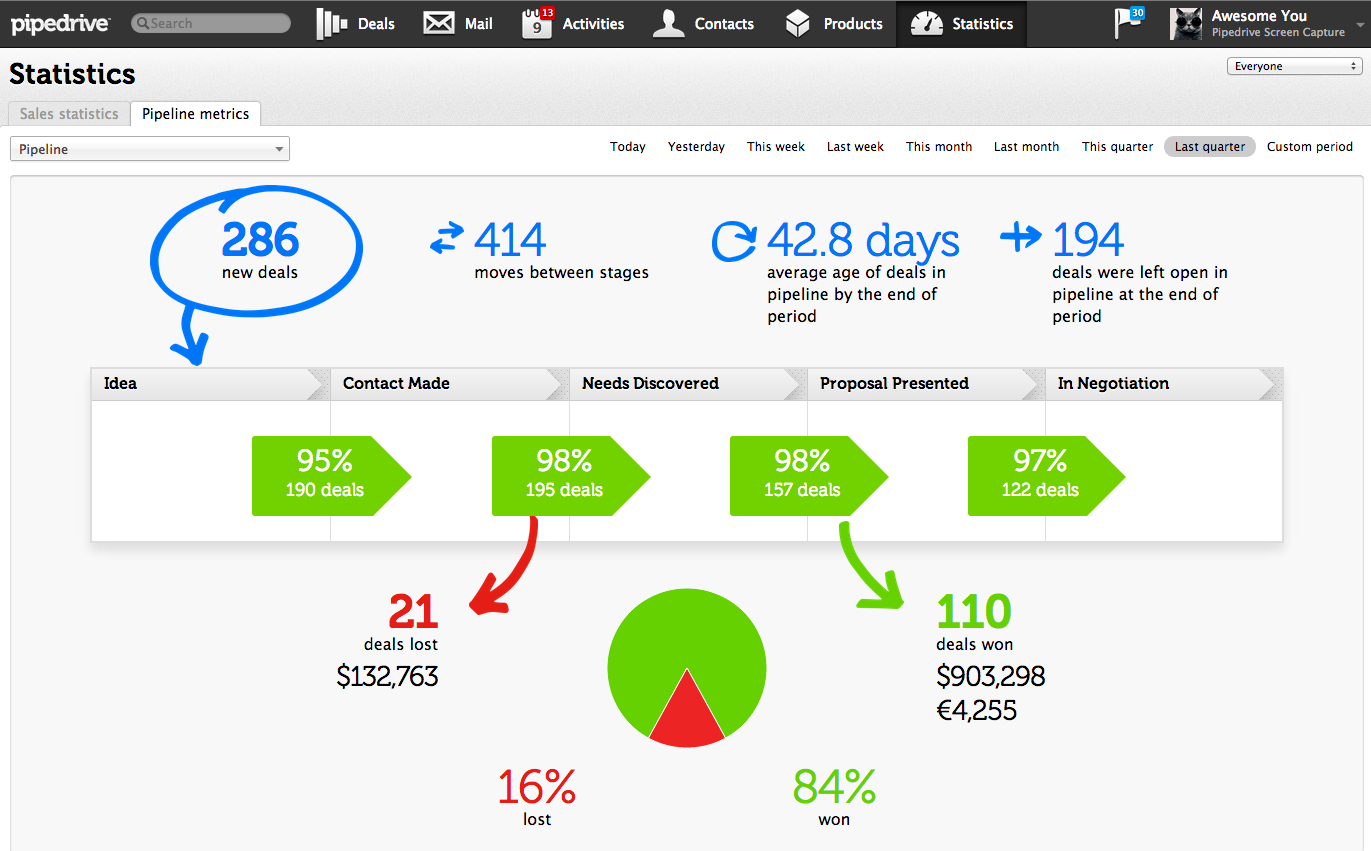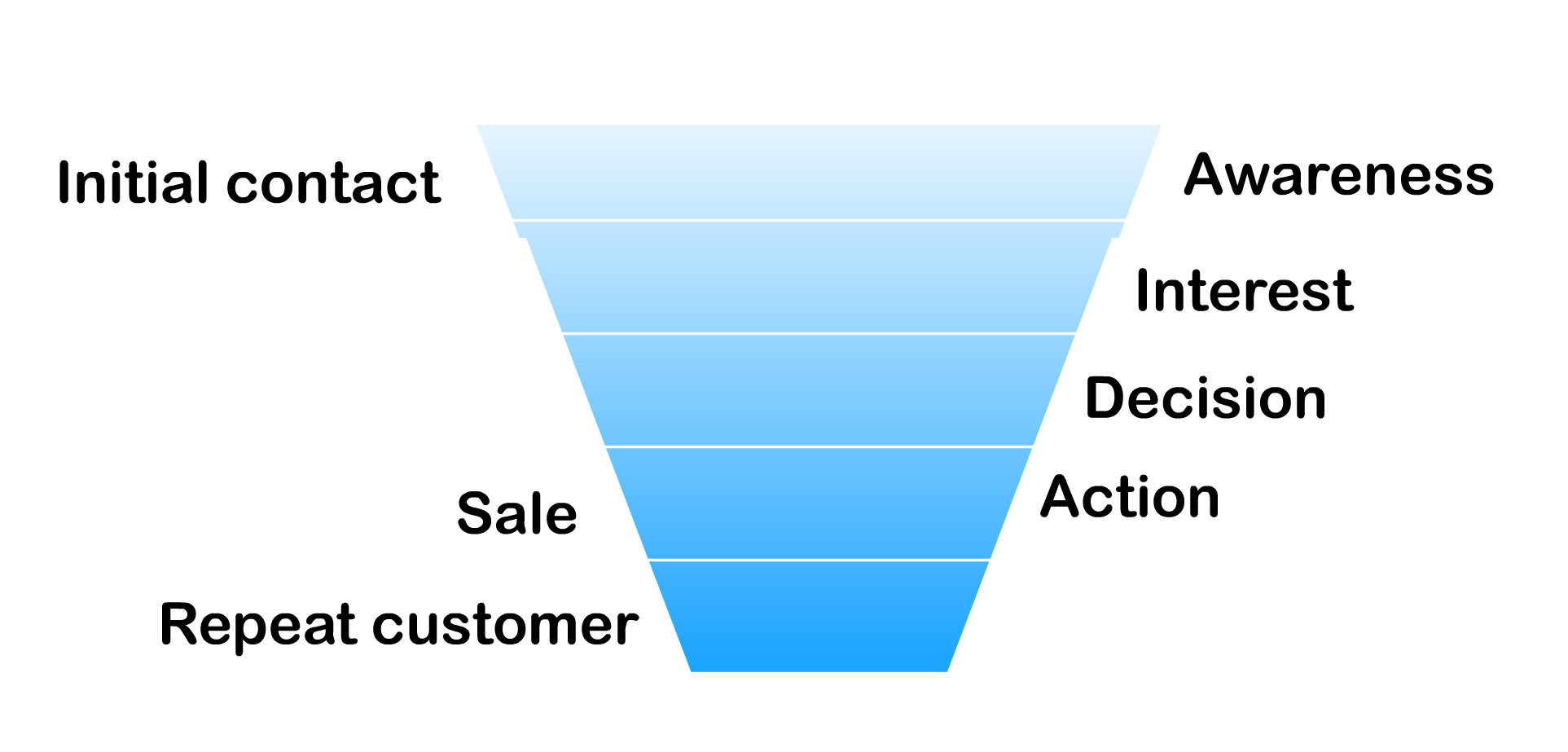Are you making as many sales as you could be?
If not, it could be because you’re neglecting your sales funnel.
According to research into sales funnels:
- Only 50% of marketing leads are ready to buy.
- The rest need to be nurtured and supported to help them make the decision to purchase.
Getting the most out of every potential contact is difficult, though.
- 79% of marketing leads fail to progress to making a purchase.
- This means that a lot of opportunities are lost because potential customers are in need of more support.
In supporting your customers through the sales process, it’s important to keep a close eye on your sales funnel.
In my work with clients, I’ve found that, no matter how much care and attention you’ve put into improving your funnel, there can still be cracks and leaks that’ll cause good quality leads to slip away without ever making a purchase.
Research into marketer priorities has found that, while lead generation is important, it’s equally important to help convert these leads into paying customers:
- 60% of marketers prioritize lead generation.
- 57% of marketers also feel that converting leads into sales is an important priority.
Basically, it’s unlikely that the first time your customers come across your brand, they’ll be completely ready to make a purchase.
- It’s far more likely that over time, through associating with your company and learning about its products, they’ll slowly generate more interest in your services before making a purchase.
By identifying and fixing weak areas in your sales funnel, you can ensure that a higher percentage of your leads go on to make a purchase and become lifelong repeat customers.
What is Your Sales Funnel?
First off, let’s look at the process customers go through before they make a purchase.
One of the biggest challenges that online business face is making the best possible use of their sales funnel.
In many cases, companies aren’t making use of their funnel at all.
- Only 68% of businesses have clearly identified their sales funnel.
- Without careful monitoring, it’s difficult to make the most of every lead and potential customers interaction.
When customers first come across your brand, it’ll often take a fair amount of time and effort to convince them why they should make a purchase.
As leads travel through your sales funnel, they’ll go through various stages:
- Awareness (learning about your brand)
- Interest (Beginning to see why your products and services are worthwhile for them)
- Decision (Making the choice to engage with your brand)
- Action (Buying something)
The sales funnel doesn’t stop there, either – the final step means pushing one-time customers to make a habit of repeat purchases.
- This means generating a solid, long-term relationship with satisfied customers.
- It involves providing helpful, relevant aftercare.
- Doing so helps to hold on to customers who’ve successfully travelled through the sales funnel, making the most of every marketing effort.
Of course, this pattern of behavior (awareness, interest, decision, and action), can apply to every aspect of the conversion funnel.
Someone hearing about your brand for the first time, for example, will travel through a mini conversion funnel for every step leading them to making a sale.
- First, they hear about your brand.
- Then, they’ll find out more information from various sources (such as online articles and customer reviews), further developing their interest in your products.
- They’ll next make the decision to learn more.
- Finally, they’ll take action by contacting your sales team or engaging with your product pages.
Ultimately, they’ve moved through a miniature sales funnel that’s a lot quicker, but that reflects how a customer will progress through your sales funnel at large.
The Shape of Your Funnel
There’s a reason your sales funnel is called a ‘funnel’ rather than a ‘tube’.
- This is because, while a lot of leads start along the trail to making a purchase, a relatively small percentage of potential customers will actually translate into sales.
- Along the way, many potential customers will get stuck, fail to progress, or otherwise disappear through the cracks in your funnel.
So while five potential customers may initially come across your brand, it’s possible that only one or two (if you’re lucky) will actually go on to make a sale.
Depending on the effectiveness of your lead conversion, your sales funnel might be wider or narrower.
What’s more, there may be weak spots and cracks in your funnel which mean more potential customers leak out at different stages.
So, with this in mind, the trick to increasing your sales is to clearly identify your sales funnel, and ensure that throughout all the stages your customers travel through, you give them the support and assistance they need to continue travelling towards making a purchase.
Basically, you need to fix the holes in your sales process.
Identifying the Holes
So what can you do to help potential customers progress towards making a purchase?
It’s very simple: you need to predict what’s going to cause problems, and then fix it.
- You need to find out where along your sales funnel customers are getting stuck.
- You can then provide additional resources and help to make sure you don’t lose your customers before you’ve even made a sale.
- This also means providing solid aftercare to encourage customers to return for additional purchases in future.
A big part of figuring out what your customers need is learning where along the funnel your potential customers are getting lost. The problem is: a lot of your interactions with customers will be automated.
- Often, if a customer hasn’t directly contacted your company, it can be difficult to determine at what point in the sales funnel they got lost and dropped off the radar.
- For this reason, often the holes in your automated system are difficult to spot.
The good news is, there are ways of monitoring how users are interacting with your site while they’re in the early stages of your funnel.
There are analytics tools that can be used to track the journey that your site users take through your website to the eventual point where they choose to contact your company or hand over their own data.
The most popular tool is Google Analytics, which can be used to see exactly where different users are dropping out of the funnel.
By setting up a Google Analytics goal analysis, you can see exactly how many users progress through different sections of your site.
This tool allows you to produce a ‘Funnel Visualization Report’ which shows clearly how many users are reaching each page of your website.
The more red shows up on each page, the more site visitors are bottling out – helping you to identify the pages that need work, which may include:
- More explanatory content
- Simpler designs
- Stronger calls to action
Tools such as this are a perfect place to start in trying to dissect your website’s problems, as well as how poor design issues are stopping customers from progressing.
Streamlining Your Funnel
For the most part, customers are going to make as much of their journey to purchasing as possible without making any attempt to contact your business directly.
- 90% of customers are confident enough with their online research skills that they feel that when they’re ready to make a purchase ‘They’ll find you’.
- This has led to a general increase in dissatisfaction with aggressive marketing campaigns and websites pushing the hard sell.
- Typically, customers will travel 50-60% of the way through the conversion funnel before making any attempt to contact the business they’re looking to buy from.
This is hardly surprising – in the age of modern automated businesses, speaking to a human directly is a last resort.
- Customers don’t like the idea of being contacted multiple times and hassled over a sale.
- They also find it harder to turn down a human being who they’ve already spoken to than bailing out of a purchase when only a person is involved.
- It’s estimated that by 2020, customers will manage 85% of their online activities without talking to a human being.
This means that a lot of the problems with your company’s sales funnel will be solved by tightening the automated process.
Once you’ve made use of Google Analytics to spot where the holes in your automated system lie, it’s time to get to work on fixing its experience.
Streamlined Website
Once you’ve established which parts of your site are letting you down, it’s time to fix the cracks and improve conversions.
Thanks to Google Analytics, you’ll have a vague idea of which web pages are causing a problem, but you won’t know exactly what is causing the problem – and it’ll probably take some experimentation to completely streamline your website to make it appealing for visitors.
The most useful tools to rely on here are:
- Heat maps
- A/B testing
Heat maps offer insight into where customers are looking, and what content they’re engaging with the most.
Using them, you’re able to get an idea of what text and images users are looking at, reading and engaging with the most.
- If what they’re looking at isn’t the content that’ll drive them forwards through the sales funnel, it’s time to rework the page.
Similarly, A/B testing what content appears where on a page, as well as how it’s presented, is a crucial step to fixing sales funnel leaks.
As an example:
Fab, an online retailer, tried A/B testing their online store to see whether a clearer text-based call to action would be more effective than the ‘+’ symbol with a shopping cart image.
Can you guess which of the variations won the A/B test?
- The ‘Add To Cart’ button proved to be 49% more effective at leading to sales than ‘+Cart’
- This shows that, for this site, a strong text-based call to action was more effective than images
- Customers read the button and visualized placing it in their cart, then took action, whereas they ignored the symbols.
It’s not always easy to predict what tiny changes can influence the success of website content and the sales funnel, so it’s definitely worth testing every aspect of a site to find what works best at encouraging customers to push forwards.
Using a Solid CRM System
Okay, so Google Analytics or similar website monitoring programs are fine for learning about the holes in the automated side of your sales funnel; and regular, thorough A/B testing and the use of heat maps can help you to streamline the automated elements of your sales funnel.
But what about the problems you face once a customer has made contact?
There are a lot of things to go wrong even once a customer is heading towards making a sale and has handed over their contact information.
- 55% of customers have reported intending to make a purchase, but backing out due to poor customer service.
- 39% of customers who feel let down by a company contact that they’ll avoid purchasing from the company for at least two years.
Clearly, it’s important to make sure that your customers are getting appropriate care and attention throughout the sales process. Thankfully, it’s a little easier to spot the problems that customers are having when you’re in regular contact with them.
Developing a solid customer relationship can be complicated, especially as every customer will have their own set of unique needs.
- To address this, there are a variety of dedicated customer retail management (CRM) tools which provide breakdowns of customer progressions and allow salespeople to keep a close eye on the needs of all their customers.
One such tool is Pipedrive, which is designed around breaking down the sales process to manageable, easily personalized chunks.
The sales pipeline can be easily tracked, and customers with different needs can be placed onto the timeline which shows them progressing from initial contact all the way through to making purchases.
Using this tool, it’s easy to track revenue made, as well as tracking each customer’s journey along the sales funnel.
The tool isn’t perfect – it’s very much designed around sellers working on big projects who need to be in constant contact with their clients, so it’s not very practical for businesses with an automated shop front.
- That said, there are plenty of other similar tools out there that will work better for different types of businesses.
- Ultimately, the purpose of CRM software is to identify where customers aren’t getting enough support, and providing it.
- That being the case, whatever system works best for an individual business is the one you should use.
Your focus should be on looking at the way customers interact with your company representatives, and how well they do at progressing from initial leads to repeat customers.
Wherever they fall down along that path is where extra attention or a new strategy is needed.
Making Contact Easy
There are two key kinds of contact that you should be providing to your potential customers throughout the sales process.
- They should be able to contact you through whatever methods best suit them.
- You should contact them periodically to help inspire them to action.
To help push your customers forwards through the sales funnel, it’s important both to be available for them, and to reach out to them when they’ve gone quiet.
This should always be done with the most sensitive, friendly attitude possible.
Being Available
Once you’re aware of what parts of the customer experience you need to improve, it’s time to start making sure that your contact with customers is fixed to overcome current traps and pitfalls.
- You need to make it as easy as possible for customers to contact you: if it’s difficult, they’ll get frustrated, and your reputation will suffer.
- This means providing a wide variety of contact methods to suit each possible customer’s needs.
- It’s important to provide coherent, comprehensive explanations that provides your customers with all the guidance they’ll need.
It’s pretty easy to put a customer off, as – with the range of options available to them – they’re often quick to take their money elsewhere if a company isn’t providing ideal support throughout the sales funnel.
One study from NewVoice found that:
- 53% of customers have switched providers because they didn’t feel appreciated.
- 42% have switched because they felt staff were rude.
- 32% got frustrated at being switched between various company employees.
- 29% switched because staff couldn’t provide the answers they wanted.
- 25% felt they were put on hold too often while making calls to the company.
From this, it’s pretty clear that customers care twice as much about being treated politely than they do about the information they’re provided with – although that’s obviously very important too.
Giving a Friendly Push
Beyond this, you also need to make sure that you’re doing everything you can to reach out to your potential customers.
- Typically, 80% of sales require at least five phone calls before customers are convinced.
- While it may feel pushy to be so consistently forward with your clients, it may be what the clients need in order to get the most out of your products (depending, of course, on the size and scope of the purchase).
- Developing a strong bond between you and your customer can mean creating a lifelong purchasing relationship that’s helpful for everyone involved.
It’s important to make every effort to push people along the sales funnel, giving them a helpful reminder of your products.
- Nurturing every lead is important, as very few new leads will be instantly ready to purchase from you.
- That said, it’s important not to overdo it – an overly pushy attitude will drive customers further away and may poison their relationship with your company permanently.
The trick is to be friendly, approachable, and respectful, while still giving customers a little nudge when necessary.
This is often a hard balance to get right, so when in doubt, assume that a little extra encouragement won’t ruin a relationship forever.
Trust me, if you’re aware of the signs, you’ll know when you’re pushing a prospect too far.
Don’t Forget the Aftercare
Just in closing, let’s spend a little time talking about the end goal of the sales funnel. Funnily enough, it’s not the sale.
Remember this diagram?
That level below the sale is key – a lot of companies focus on marketing to customers and taking them through to the sale stage, but then drop the ball.
- It’s important, even after your customers make a purchase, to continue strengthening your relationship with them, rewarding them for loyalty and providing all the tools they need to get the most out of your product.
- This kind of behavior leads to repeat customers, who are far more useful as they’ll consistently come back for more of your products.
- Nurture your customer relationship enough, and they’ll become evangelists for your brand, spreading the good word to their friends and colleagues, and helping more leads to travel smoothly down the sales funnel.
Remember: no sales funnel is perfect; there are always rough parts or cracks that can be smoothed over.
The trick to fixing little potholes is to keep experimenting, provide customers with constant useful, helpful resources, and keep an open dialogue with your leads to help them on their journey towards becoming regular paying customers.
Do these things, and you’ll see a significant increase to your sales figures.
Do you make it a priority to find and fix holes in your sales funnel? If so, share your best tips for doing so by leaving a comment below:
Images:
Flickr, Wikipedia, Marketing Sherpa, Flickr, Google Analytics, Flickr, RMS Bunker, Optimizely, Flickr, Pipedrive, Flickr, Flickr, NewVoice



